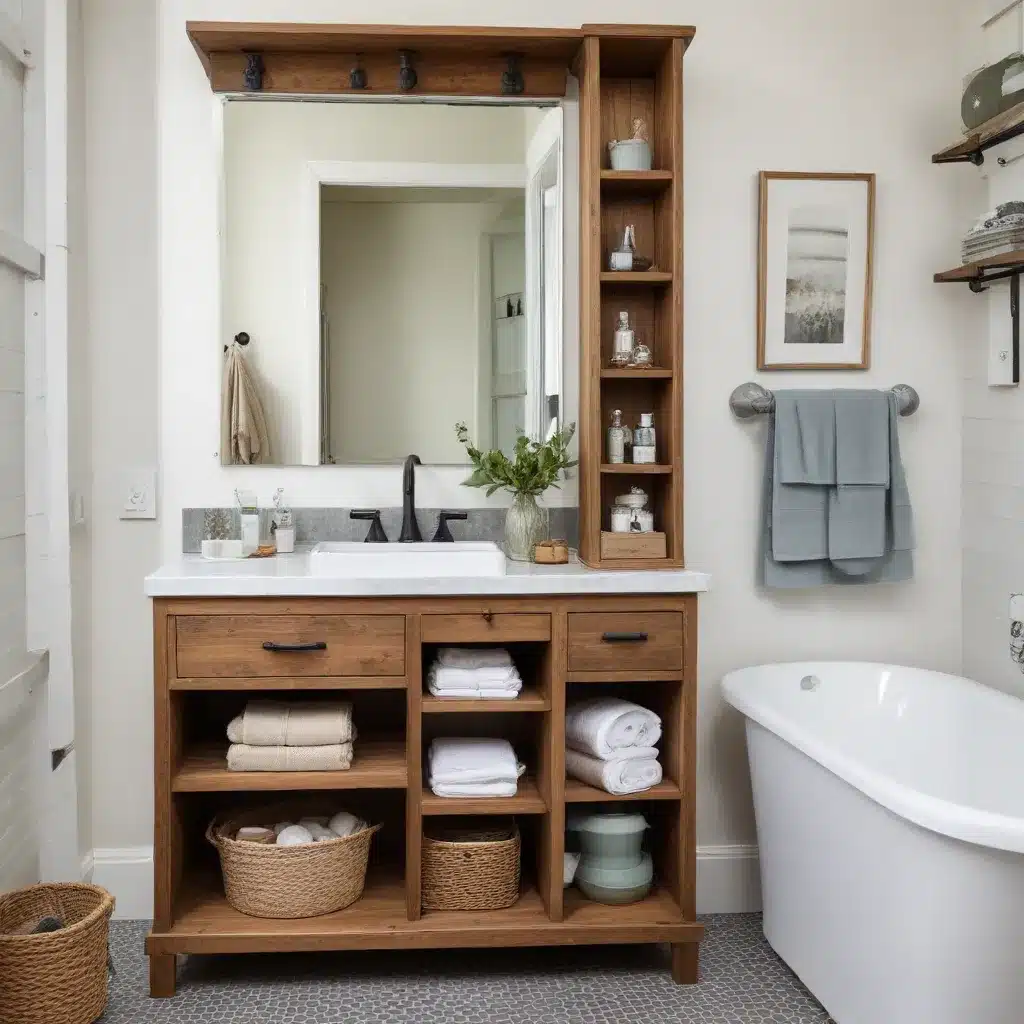
Navigating the UK’s Building Regulations for Bathroom Renovations
In the ever-evolving world of home improvement, the bathroom often becomes a focal point for homeowners seeking to create a truly captivating and functional space. As we navigate the UK’s building regulations and industry best practices, the prospect of transforming a tired bathroom into a sanctuary of style and efficiency can seem daunting. However, by understanding the nuances of regulatory compliance and embracing sustainable building techniques, homeowners and contractors can embark on a journey of reclaimed refinement.
The UK’s building regulations play a crucial role in ensuring the safety, accessibility, and energy efficiency of all residential projects, including bathroom renovations. Compliance with these regulations is not only a legal requirement but also a testament to the homeowner’s commitment to responsible construction practices. One such regulation that is particularly relevant to bathroom design is Part G of the Building Regulations, which addresses the conservation of water and sanitation. This section outlines the minimum requirements for water-efficient fixtures, drainage systems, and ventilation, all of which must be carefully considered when planning a bathroom renovation.
Maximizing Water Efficiency for Sustainable Bathrooms
In the UK, the average household consumes around 142 litres of water per person per day, with the bathroom accounting for a significant portion of this usage. To reduce water consumption and align with Part G regulations, homeowners and contractors must prioritize the selection of water-efficient fixtures and fittings. This can include installing low-flow showerheads, dual-flush toilets, and taps with aerators, all of which can significantly reduce water usage without compromising the user experience.
Beyond the selection of water-efficient fixtures, the design of the bathroom’s drainage system is also crucial. Proper sizing and installation of pipes, traps, and ventilation components ensure efficient waste removal and prevent potential issues such as blockages or unpleasant odours. Adherence to Part H of the Building Regulations, which covers drainage and waste disposal, is essential in ensuring the long-term functionality and compliance of the bathroom renovation.
Embracing Sustainable Building Practices
As homeowners and contractors alike become increasingly conscious of their environmental impact, the demand for sustainable building practices in bathroom renovations has grown exponentially. This shift has led to the exploration of repurposed and reclaimed materials, which not only contribute to a more eco-friendly outcome but also add a unique charm to the space.
One such example of reclaimed refinement in bathroom design is the use of salvaged fixtures and fittings. By sourcing vintage sinks, taps, or even claw-foot bathtubs, homeowners can infuse their bathroom with a sense of character and history, all while reducing the need for new resource-intensive manufacturing. Additionally, the incorporation of reclaimed wood, tiles, or even repurposed cabinetry can add depth and texture to the overall aesthetic, creating a truly one-of-a-kind space.
Cost-Effective Strategies for Bathroom Renovations
While the initial investment in a bathroom renovation can be significant, there are several cost-effective strategies that homeowners and contractors can employ to maximize their budget and ensure long-term value. One such approach is the strategic use of modular storage solutions, which not only optimise available space but also provide a flexible and adaptable layout.
By incorporating custom-designed cabinetry or shelving systems, homeowners can create a tailored storage solution that caters to their specific needs, without the added expense of a full-scale structural overhaul. This modular approach also allows for easy future modifications, ensuring that the bathroom remains functional and accommodating as the homeowner’s needs evolve over time.
Another cost-saving measure that aligns with sustainable building practices is the repurposing of existing materials. Instead of opting for entirely new fixtures and fittings, homeowners can explore the possibility of refinishing or refurbishing existing elements, such as vanity units or towel rails. This not only reduces waste but also adds a unique character to the space, as the stories and imperfections of the reclaimed materials become an integral part of the design.
Navigating the Regulatory Landscape for Bathroom Renovations
Ensuring compliance with the UK’s building regulations can be a complex and multifaceted process, but with the right guidance and expertise, homeowners and contractors can navigate this landscape with confidence. The first step in this journey is to thoroughly understand the specific regulations that apply to the bathroom renovation project, including Part G, Part H, and any other relevant sections.
Once the regulatory requirements have been identified, it is crucial to develop a comprehensive plan that addresses each aspect of the renovation, from the selection of water-efficient fixtures to the design of the drainage system. This plan should also consider the incorporation of sustainable building practices, such as the use of reclaimed materials, to align with the homeowner’s environmental goals and ensure long-term cost-effectiveness.
Throughout the renovation process, regular inspections and consultations with local building authorities can help ensure that the project remains compliant and on track. By proactively addressing any potential issues or concerns, homeowners and contractors can avoid costly delays or rework, ultimately delivering a bathroom that not only meets the UK’s rigorous standards but also reflects the homeowner’s vision of reclaimed refinement.
Conclusion
As homeowners in the UK continue to seek out ways to transform their bathrooms into havens of style and sustainability, the importance of navigating the regulatory landscape and embracing sustainable building practices has never been more crucial. By understanding the nuances of Part G, Part H, and other relevant building regulations, and by incorporating reclaimed materials and modular storage solutions, homeowners and contractors can embark on a journey of reclaimed refinement, creating bathrooms that are not only visually captivating but also environmentally responsible and cost-effective in the long run.
At ABC Home, we are committed to guiding our clients through the complexities of bathroom renovations, ensuring that their projects not only adhere to the UK’s building regulations but also reflect their unique vision and commitment to sustainable living. Our team of experts is dedicated to providing practical advice, technical expertise, and innovative solutions to help transform tired bathrooms into spaces of reclaimed refinement.
















